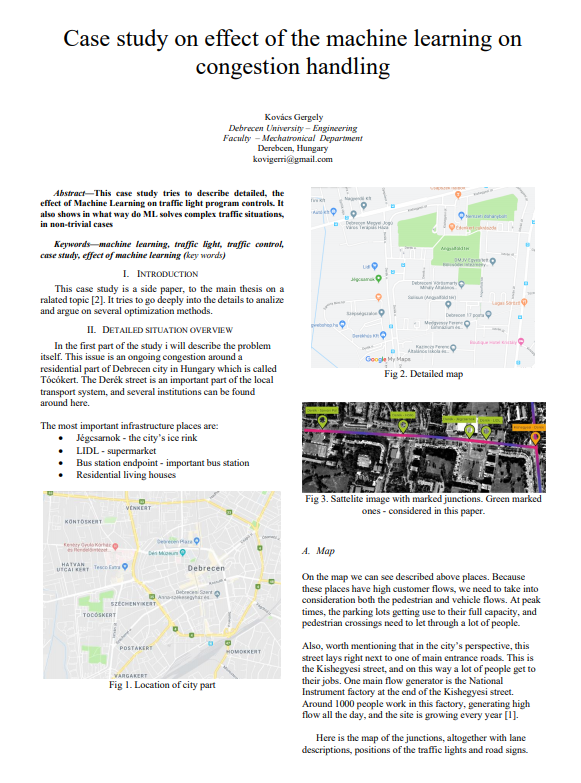- Topic
- Mobility management
- Traffic and demand management
- Country
- Hungary
- Resource type
- Case study
First published on 10 September 2019.
This case study, produced by the Engineering Faculty, Mechatronical Department at Debrecen University shows the results of the KnK Venturi Traffic Optimisation Machine Learning (ML) System on a given traffic problem. The solution provided by machine learning demonstrates the problem-solving capabilities of new technologies.
Context
The city of Debrecen in Hungary is currently in the midst of a traffic revolution. There have been many traffic improvements implemented in the years preceding 2019, making the city a perfect place for innovative ideas to prosper.
This paper presents a case study which focuses on using machine learning to find a solution to recurring congestion in parts of the city where on workdays, at peak rush hours, major disruption and delays are encountered by commuters. Consulting with local traffic managing company and the Debrecen city administrations Smart City Office, the study team at Debrecen University were assigned to resolve this issue, with the help of machine learning.
In action
The team wanted to develop a self-healing system for the city, able to detect and propose a simple solution for different traffic issues. This means that the machine learning system was developed in order to design reliable Traffic Light Programme (TLP). The system is capable of isolating the out the types of infrastructure improvements that could be implemented, such as; changes to road lanes, traffic lights, new restrictions on traffic turning, etc.
Results
The result, detailed in the case study, was a Traffic Light Program (TLP) which can manage the practicalities of peak traffic - to prevent congestion from forming at peak times. The case study document also describes a potential infrastructural change involving a secondary lane extension which was recommended by the ML system.
Challenges, opportunities and transferability
The biggest issue for the team was to analyse the whole affected road section. As the road section studied during this project is 2 km long, it proved very difficult to capture all the necessary information at the precise moment congestion started to form - or isolate the exact cause. So the team took several measurements on different sections of the road and then equivalised them to produce realistic simulations. This approach can be easily transferred to any other traffic handling situation analysis.
In Depth
The detailed evaluation of the subject is presented in the paper, available to download below.
This case study is a part of a documented series about traffic optimisation with a functioning optimisation system. The project often referred to as KnK Venturi is a Hungarian, Debrecen based initiation to build a better traffic system, based on current hardware. This optimisation system is a link between the future's self-controlling traffic solutions, and already existing systems, as it can be used in both old and new systems.

